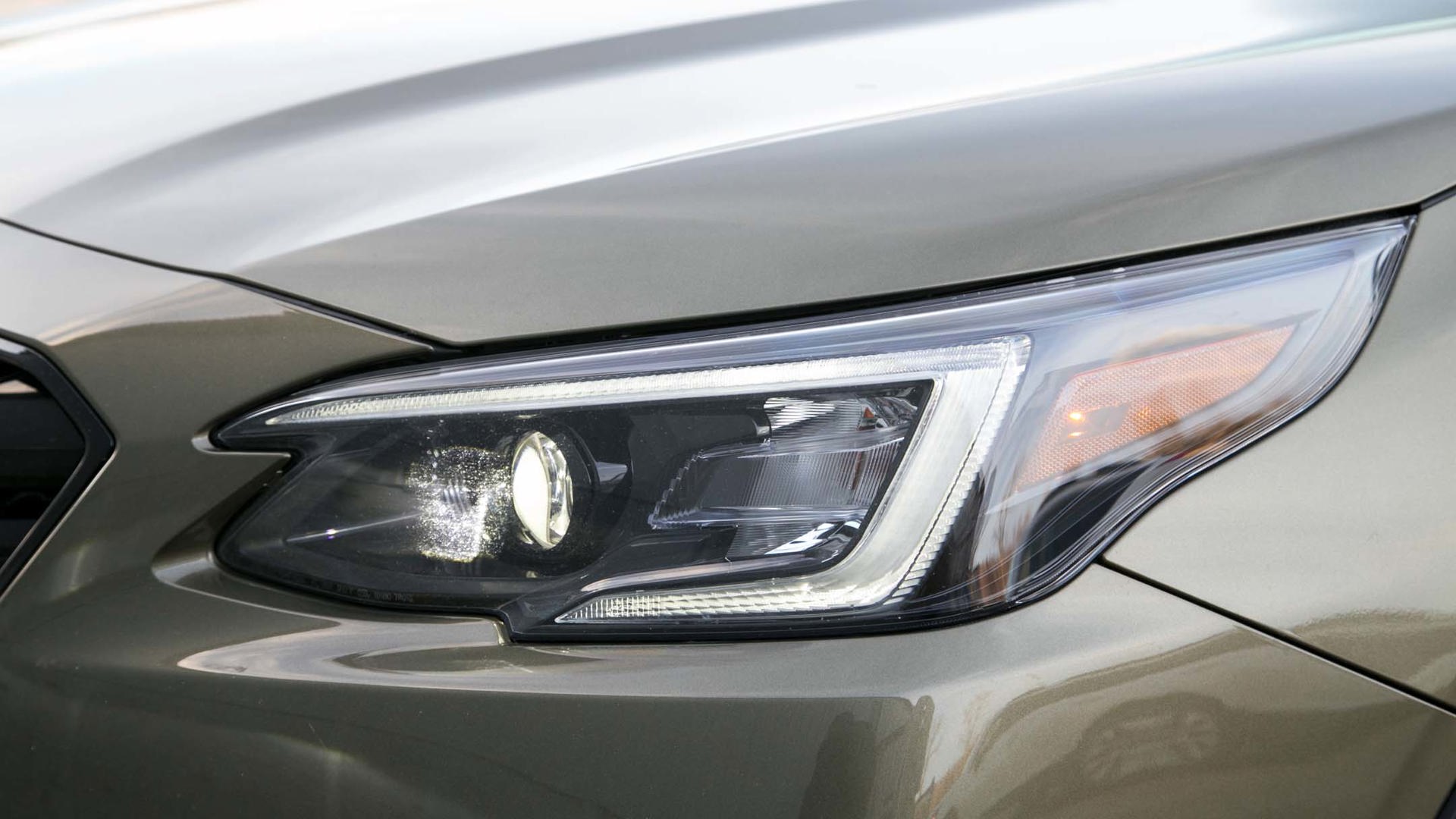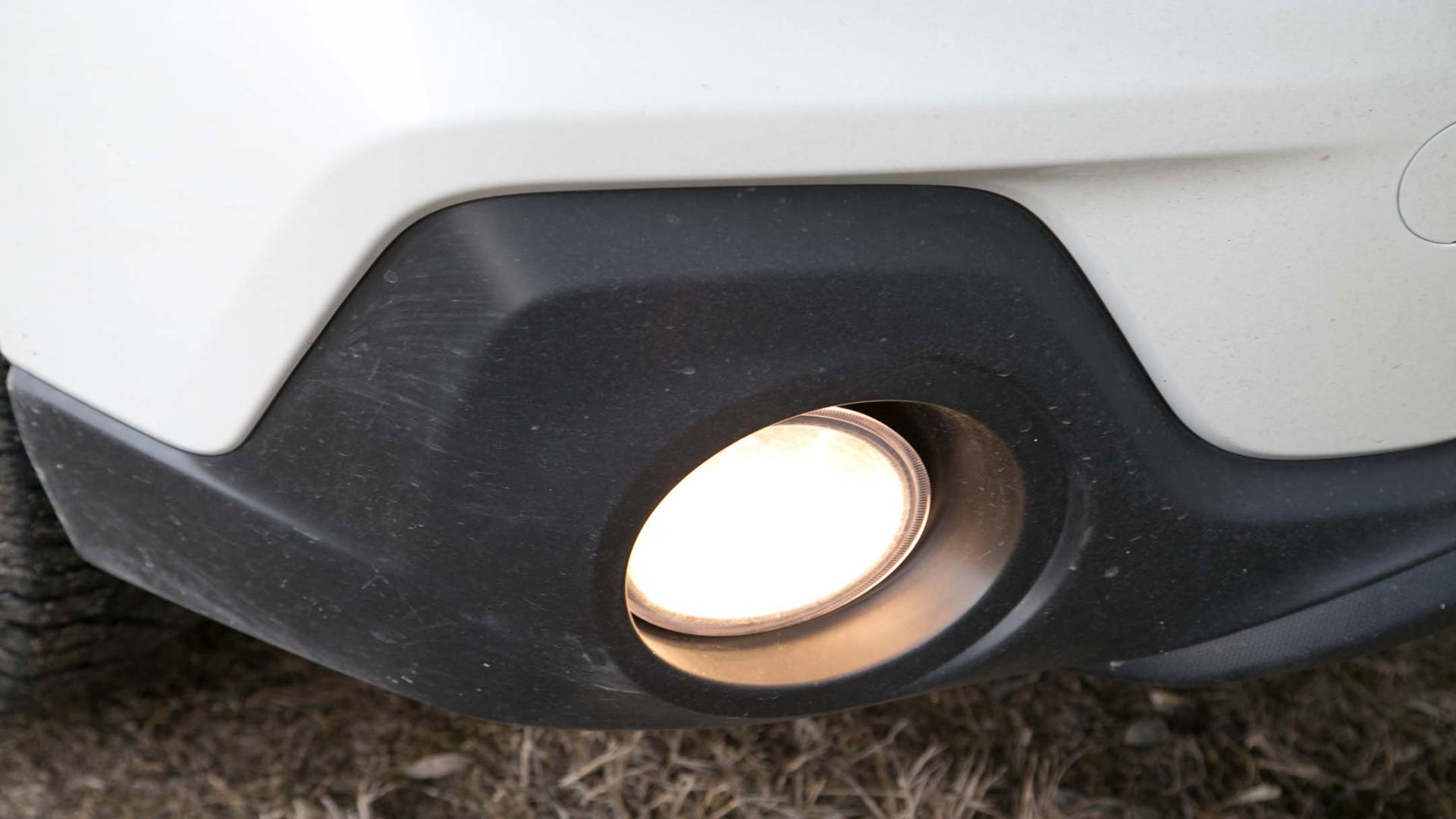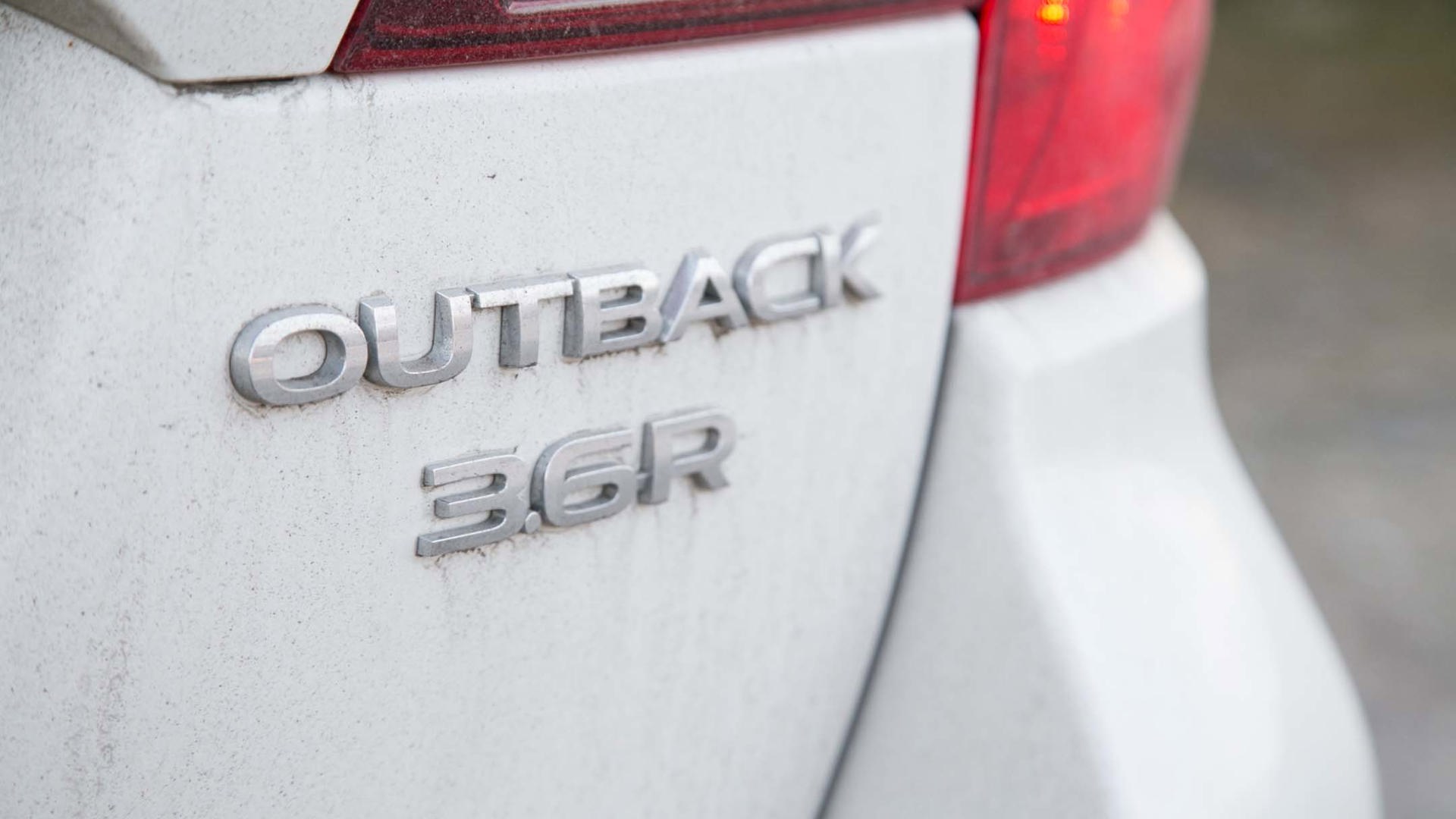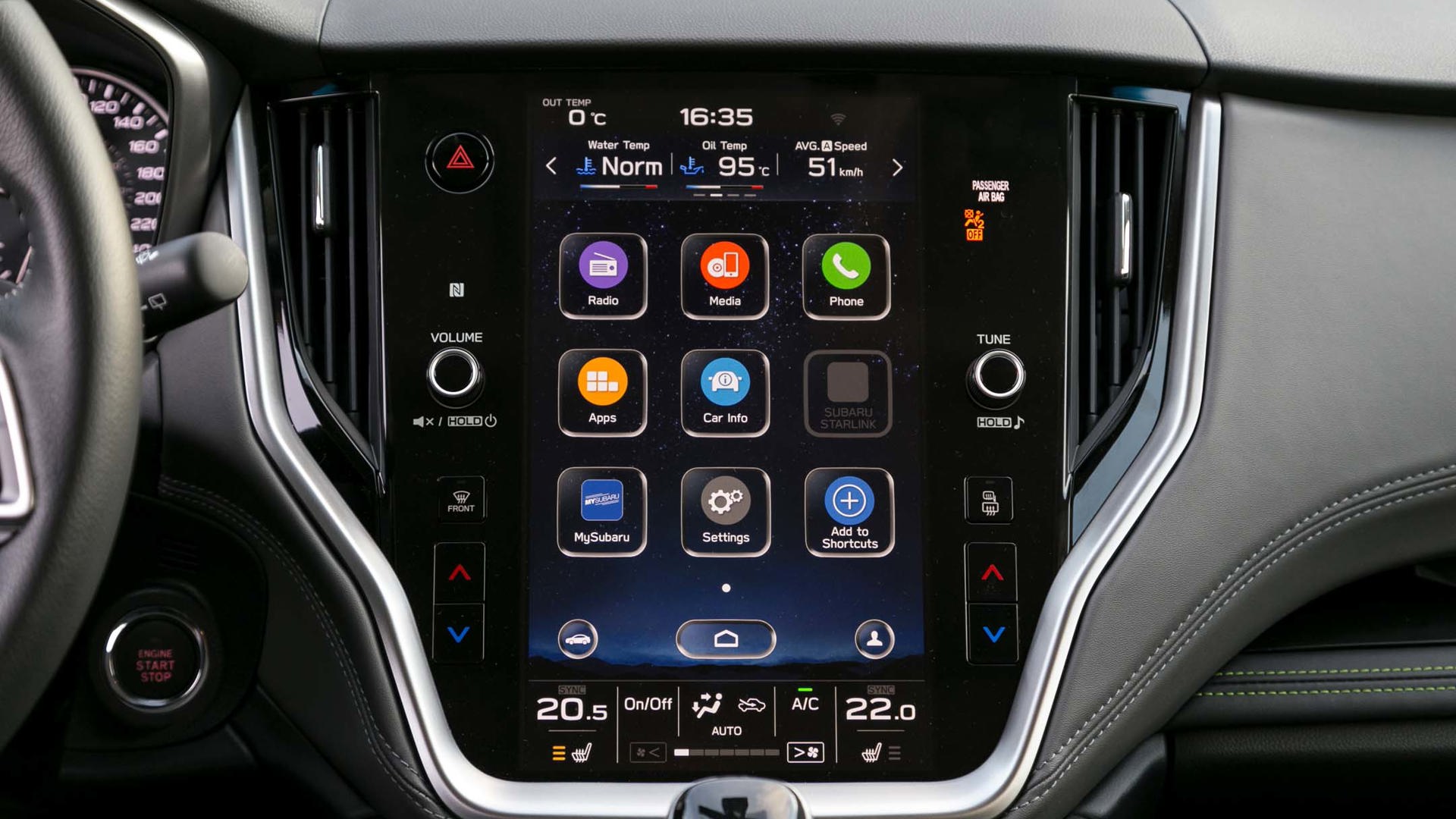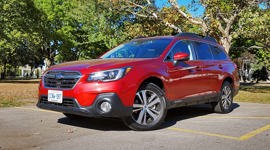Comparison Data
|
2019 Subaru Outback 3.6R Limited
|
2020 Subaru Outback Outdoor XT
|
|---|---|
|
Engine Displacement
3.6L
|
2.4L
|
|
Engine Cylinders
H6
|
Turbo H4
|
|
Peak Horsepower
256 hp @ 6,000 rpm
|
260 hp @ 5,600 rpm
|
|
Peak Torque
247 lb-ft @ 4,400 rpm
|
277 lb-ft @ 2,000 rpm
|
|
Fuel Economy
12.0/8.7/10.5 L/100 km cty/hwy/cmb
|
10.1/7.9/9.1 L/100 km cty/hwy/cmb
|
|
Cargo Space
1,005 / 2,075 L seats down
|
920 / 2,144 L seats down
|
|
Base Price
$41,395
|
$38,695
|
|
A/C Tax
$100
|
$100
|
|
Destination Fee
$1,800
|
$1,800
|
|
Price as Tested
$43,295
|
$40,595
|
|
Optional Equipment
None
|
None
|
Subaru’s advertising for the 2020 Outback depicts the SUV competing in a series of tasks that showcase its outdoorsy prowess against its nemesis, a serious-looking mountain goat. As formidable as the goat is, he simply bows out when it comes to hauling a canoe, while the Outback happily bounds through the wilderness, boat strapped to its roof rack.
It’s a fun and memorable campaign that reinforces the active and adventurous nature Subaru pitches for its Outback. The company calls this year’s all-new model the Greatest Outback of All Time (G.O.O.A.T), but as big fans of last year’s Outback, we wanted to put that claim to the test. More specifically, is the turbocharged four-cylinder version better than the six-cylinder model it replaces?
Styling
The Outback is consistently one of Subaru’s best-selling – and most important – models, so its evolutionary styling changes are a smart move. This latest generation has enough resemblance to the original Outback from decades ago that it’s clearly part of the same lineage, and it takes a keen eye to spot the differences from the last generation to this new one.
Our 2020 tester is an Outdoor XT trim, which mercifully omits the abundant chrome adornments of other Outback models for blacked-out trim and badging. With its dark wheels and new Autumn Green paint (a perfect choice for the Outback, by the way), the new model’s look is more contemporary and youthful than our 2019 model’s Limited trim. Overall, the new version’s taillights are a bit pointier, the fog lights are thinner LED units, and the beltline sweeps up to the rear more dramatically than the old model.
Similarly, the 2020’s interior has been modernized thanks largely to its dashboard being dominated by the large screen that replaces much of the switchgear and buttons found in the 2019 model’s layout. The lime-green stitching on the seats is a fun accent in the 2020 model, too.
2019 Subaru Outback: 7/10
2020 Subaru Outback: 7.5/10
Power
The biggest news surrounding the 2020 Outback is the return of a turbocharged engine as the top choice, replacing the venerable 3.6L six-cylinder. The turbo flat-four cylinder is the same 2.4L unit found in the three-row Ascent SUV – as well as the Legacy GT sedan – and while power is up only 4 hp from the naturally aspirated six-cylinder in last year’s Outback, the torque measure leaps by 30 lb-ft to a total of 277 lb-ft. Since torque is what most of us feel in day-to-day driving, this is noteworthy, and when accelerating to merge at highway speed, the greater thrust of the new Outback is very noticeable. The turbo-four also produces its torque with far fewer revs, so the 2020 model is more responsive around town and when pulling away from a standstill.
2019 Subaru Outback: 7/10
2020 Subaru Outback: 7.5/10
Driving Feel
With more power comes more responsibility, and the new Outback struggles with this aspect. Thanks to its standard (and excellent) full-time all-wheel drive system, traction is never a problem with either Outback, but the new model’s continuously variable transmission (CVT) doesn’t make the best use of the power the engine gives it.
While softer in its low-end grunt, the 2019 model is much smoother in delivering the power through its own CVT. The 2020 Outback is snappy off the line, then simulates a gear change, dropping the engine’s revs and resulting in a sluggish, non-linear feel when trying to accelerate normally.
Outbacks have always been surprisingly adept off-road, with greater capability than their reputation as little more than a jacked-up wagon might suggest. Unlike most off-road vehicles, the Outback’s elevated ride height (220 mm) and malleable suspension produces an unexpectedly supple ride, both on-road and off. Southern Ontario roads are brutalized by winter weather, resulting in monstrous heaves and potholes, yet the Outback’s suspension soaks it up effortlessly.
Just as both Outbacks surprise with their ride quality, both models also exhibit the same roly-poly nature when handling corners. There’s nose-dive under braking and considerable body roll when taking corners at speed, but good amounts of grip mean that the big Subies remain confidently attached to terra firma to produce decent handling. Both models have heavily boosted steering devoid of much road feel.
Just as the handling is competent, so too are the brakes with adequate bite and solid stopping power.
2019 Subaru Outback: 7/10
2020 Subaru Outback: 6/10
Fuel Economy
Aside from its bump in power, the other motivator for replacing the Outback’s six-cylinder engine with the newer – and smaller – turbo four-cylinder is a significant improvement in fuel efficiency. Last year’s Outback was rated by Natural Resources Canada (NRCan) at a thirsty 12.0 L/100 km consumption in the city, and couldn’t manage better than 8.7 on the highway. The new Outback’s city consumption is improved notably to 10.1 L/100 km, while its highway improvement is less significant at 7.9.
In real-world driving with a slight skew toward highway versus city driving, we observed an overall average around 10.0 L/100 km for the new version, whereas the 2019 model tends to average around 11.0 L/100 km in the same conditions. Both engines are happy with regular grade fuel.
To help further its efficiency, the 2020 Outback also utilizes an auto-stop/start feature to mitigate consumption when idling in traffic or at a stoplight. Our tester was quick to shut off its engine, but also very eager to restart after only a few seconds at a stoplight, making us question its effectiveness. [This was, however, a wintertime test; warmer weather will undoubtedly yield different results. – Ed.] What’s more, the restart was always very rough, sending a significant shudder through the car – a symptom of its horizontally opposed piston configuration.
2019 Subaru Outback: 6.5/10
2020 Subaru Outback: 7.5/10
Practicality
Subaru has always put considerable emphasis on the Outback’s utility, and that hasn’t changed for 2020. Its ground clearance and excellent traction make it a formidable choice for all weather conditions, while its cargo carrying capability is good enough to be properly useful, and the standard roof racks come with swing-out cross bars, too.
The new Outback grows incrementally in overall length, height, and width versus the 2019 model, but its cargo capacity with the rear seat up actually shrinks from 1,005 L to 920 L. [A result of new testing methodology. – Ed.] Second-row passengers benefit from a slight bump in legroom this year, while folding the back seat flat – a task that’s easily done by grabbing levers in the cargo area – results in 2,144 L compared to 2,075 L in the previous model.
The power close button on the hatchback is joined for 2020 by a close-and-lock button. It’s a little detail, but an appreciated one. One other practical element that Subaru has improved for 2020 is the increased towing capability of the Outback which increases from 1,224 kg (2,700 lb) to 1,588 kg (3,500 lb).
2019 Subaru Outback: 7.5/10
2020 Subaru Outback: 8.5/10
Comfort
The mismatched trim levels of this comparison mean that the costlier 2019 Limited tester is better equipped with niceties such as onboard navigation, premium stereo, a heated steering wheel, and perforated leather seats, none of which are found on the 2020 Outdoor XT model.
However, the seat comfort, ride quality, and cabin quietness are equally good between the two generations, and where rear seat passengers get a bit more space in the 2020 model, the front headroom is actually decreased now, so there’s a slight trade-off there.
2019 Subaru Outback: 7.5/10
2020 Subaru Outback: 7.5/10
Features
Lacking some of the luxury trimmings of the Limited model, the 2020 Outdoor XT nevertheless is a decently equipped car. Subaru calls the seating material in the Outdoor trim, “all-weather, soft-touch upholstery,” but we call it what it is: cheap-feeling vinyl that won’t breathe well in the warm weather. Still, its durability is likely unmatched by the leather in the Limited trim.
Both models have power sunroofs, heated rear seats, automatic dual-zone climate control and a host of USB and 12-volt power outlets throughout the cabin. And while we commend Subaru for making all four window switches auto up and down (versus just the front two on last year’s model), we’d love to see proximity door lock sensors added to the exterior rear door handles.
Speaking to its proposed off-road excursions, the Outdoor XT comes with a full-size spare tire, a front camera, and a dual-mode version of the brand’s X-Mode traction control that other trims (including our 2019 Limited model) lack.
2019 Subaru Outback: 7.5/10
2020 Subaru Outback: 7.5/10
User Friendliness
Subaru has had some ups and downs with the various generations of its Starlink infotainment systems. While the 2019’s touchscreen is notably smaller than the 11.6-inch one that dominates the 2020’s controls, it offers some notable benefits. For one, controls like the seat heaters are easily accessed with a physical button in the 2019 model; for 2020, it’s a multi-step process through a few touchscreen taps.
Beyond that, despite a larger screen, Apple CarPlay displays much smaller on the new screen than the old, making text difficult to read, and the functions trickier to find while driving. More concerning, the 2020’s system repeatedly hiccupped, losing CarPlay capability briefly before reconnecting a few minutes later.
The climate control system also operated strangely in our 2020 model, where with the system set to “Auto” would continue raising the temperature well past the 19 or 20 degree setting, before eventually settling down again.
2019 Subaru Outback: 8/10
2020 Subaru Outback: 6/10
Safety
The 2019 Outback was already highly regarded for its safety, and for 2020, Subaru has added a few more features to make the SUV safer still. Outback continues with its excellent EyeSight active safety system that features pre-collision braking and throttle management, adaptive cruise control, lane-departure monitoring, and lane-keep assist. The latter was aggressive enough that we elected to switch it off during most of the test period, which reinforces the importance of tuning these systems to only interfere when absolutely necessary to avoid driver distraction.
2019 Subaru Outback: 8/10
2020 Subaru Outback: 8/10
Value
For 2019 there was no Outdoor trim, and in the 2020 lineup, it fits nicely as a reasonably-well-equipped choice, slotting in under $40,000. Comparing apples to apples, a 2020 Limited or Premier trim has only gone up a few hundred bucks over last year’s corresponding models, making the incremental improvements a slightly better value for the dollar.
2019 Subaru Outback: 7/10
2020 Subaru Outback: 7.5/10
The Verdict
In most respects, the 2020 Outback is the Greatest Outback of All Time, though when compared with the finely polished 2019 3.6R, it shows there’s still room for further fine-tuning. Subaru had taken the last generation as far as it could and the new model is a more contemporary offering, but before we’ll fully embrace the new turbocharged drivetrain, Subaru will need to refine it further.









